How to protect ripening grapes from wasps and sparrows: ways to fight and save the harvest
Agree, after you have grown and then saved the crop from oidium and mildew, to give it up to be torn apart by winged parasites (sparrows and wasps) is especially offensive, because so much effort was applied.
Indeed, wasps and birds are a real problem faced by almost all growers (and cherry and cherry owners).
Next, you will learn how you can deal with birds and wasps in the vineyard, what methods are best used to protect ripening grapes from flying pests.
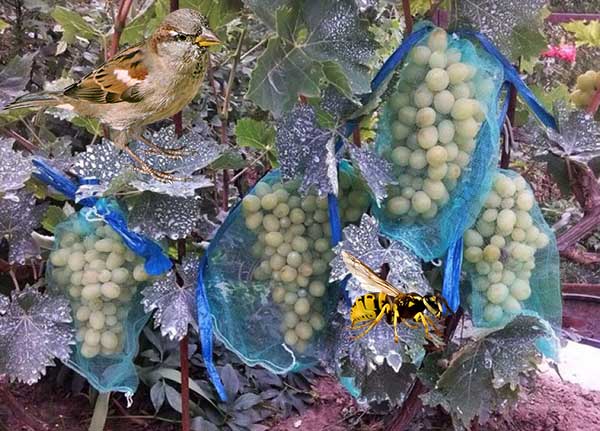
Content
The essence of the problem: who and when starts to peck berries
Of course, the main pests of grapes during its ripening period are birds (sparrows, starlings, sometimes even jays) and wasps.
Of course, there is still a grape leaf roll, but that's a completely different story.
It is believed that the main reason for the appearance of wasps on grapes is mechanical damage, which primarily occurs due to pecking of berries by birds (sparrows).
Also, the causes of damage to berries can be rains and fungal diseases (the same oidium), leading to cracking of the berries.
Thus, as a rule, it is the birds (sparrows) that peck at the berries first, and then wasps appear right there, then midges, flies, butterflies and ants join.
But there are also wrong wasps, who are the first to beat (pierce with a sting) the grapes, without waiting for the sparrows.
Interesting! Most often, birds do not touch late-ripening grapes: wasps attack it, and then ants.
How to protect grapes from birds (sparrows): using nets
With the beginning of the ripening of the grapes, you should immediately begin to take measures to protect the ripening crop from sparrows.
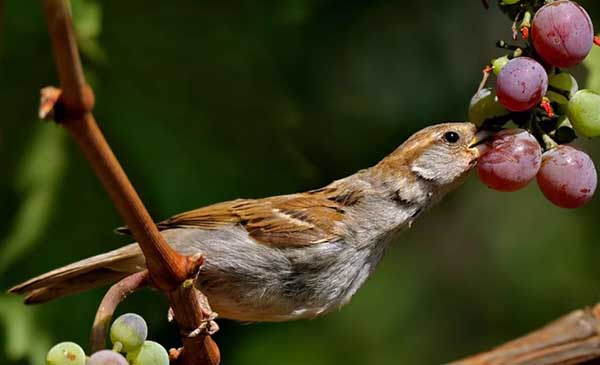
To protect the vineyard from birds (sparrows), as a rule, the most common fishing nets with a mesh diameter of 16-20 mm (but not more than 25 mm).
Anchor the mesh can be straight to the wire trellis, for example, with a garter pistol.
Remember! You need close the net exactly the lower area where the clusters are located.
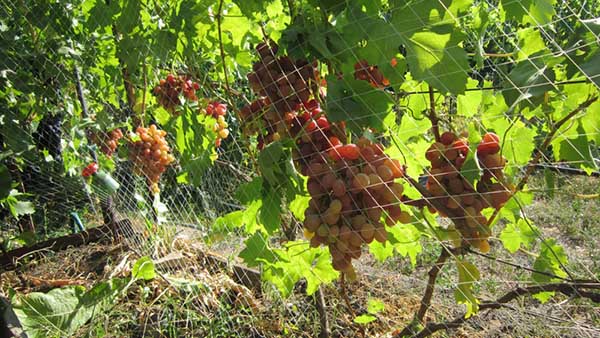
Moreover, you need to close it on 2 sides, and ideally it is better to fix it both below and above so that the feathered pests cannot fly around the obstacle in any way.
Advice! The net is very convenient for two people to hang.
Advantages and disadvantages of using a fishing net to protect grapes from birds:
- Easy to mount (put on and take off).
- The bushes are well ventilated (the mesh does not affect the air circulation in any way).
- Can be carried out without hindrance processing (no need to lift).
- Birds can penetrate under the net in places where it is loose and has holes.
Unfortunately, such the net will not protect your bunches from wasps... However, if the birds do not peck the berry, then, accordingly, there will be much less wasps.
Provided that the "wrong" wasps themselves will not be the first to pierce the berries.
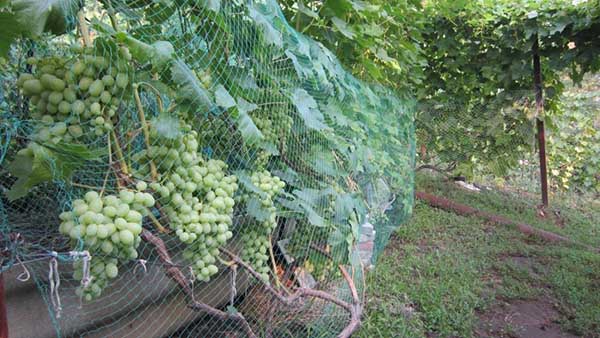
By the way! It is not necessary to use a fishing net: a special one will do. shading mesh (usually green).
As for the density, you can take from 50%, but even less is better (35-40%).
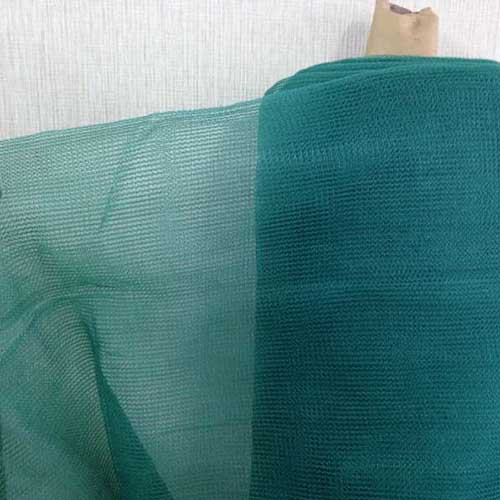
Video: protecting the vineyard from birds
Biological product "Cat"
Your reliable protector of grapes from birds in the picture:
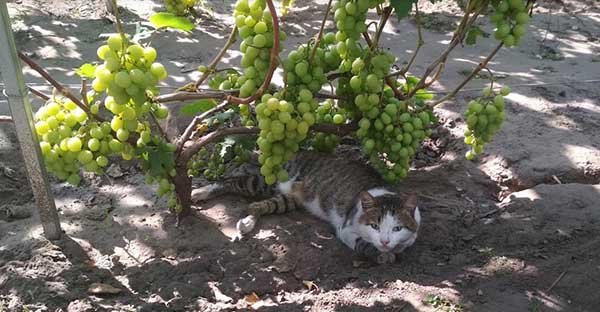
How to protect grapes from wasps: using bags, baits and traps
If you don't like the idea of a sparrow netting or feathered pests do not bother your vineyard at all, but wasps only spoil the ripening berries, then here's what you can do to protect the bunches.
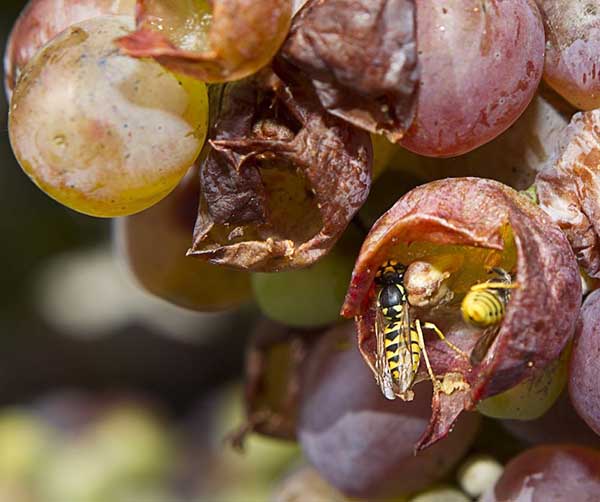
Protective pouches
As a rule, most wine growers use wasp protection special ready-made pouches.
- The standard bag sizes are 22 by 35 cm and 28 by 40 cm.
- 22/35 are suitable for small bunches (up to 1 kg).
28/40 - for bunches from 1 to 2.5 kg.
- The mesh size is 1 mm.
- Price - 11-12 rubles per piece (most often they sell in bulk from 50 pieces).
One of the main advantages is that the bag has special ties for fastening.
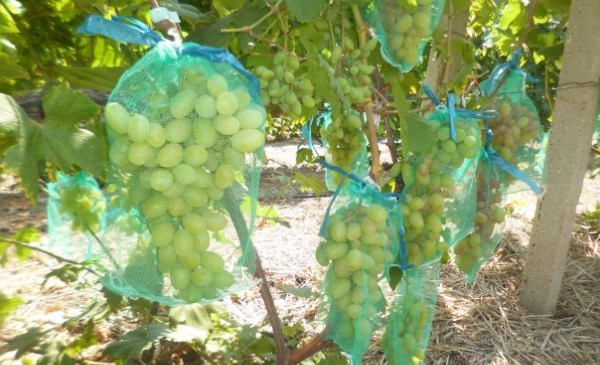
Of course, you can make (sew) such bags yourself from:
- ordinary gauze (the most budgetary option);
- mosquito net;
- tulle (minimum density);
- shading mesh (with a degree of protection 35-40%);
- white agrofibre - spunbond / agrospan (density no more 17 g / m2).
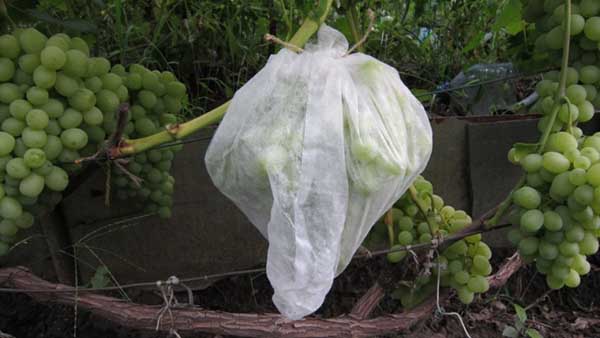
Important! The most important thing is that the bags weren't too tight, otherwise, due to poor ventilation, moisture will stagnate, which contributes to rot and mold. Or grapes can simply be boiled there.
At the same time, the material should not be either too shading or too transmissive of UV rays, otherwise your berry will simply burn out under it.
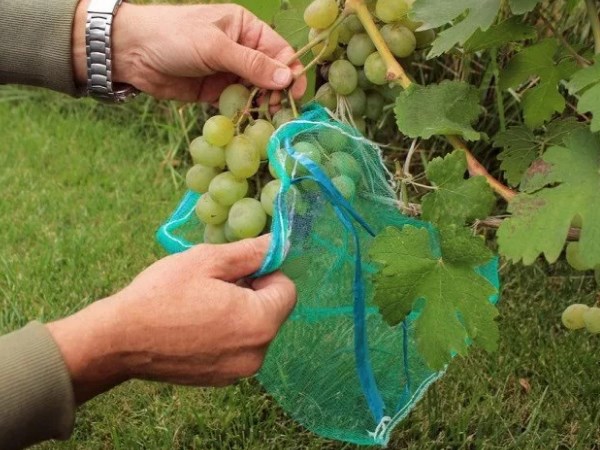
Important! Take your time to put on the bags when the berry is still green and tough. No matter how well the bag is blown through, if there are frequent rains, then it will not have time to dry out, which can eventually cause a flash gray rot and / or oidium.
Therefore, it is better to put the bags on after the wax ripeness (when the berry softens, turns a little colored and just starts to gain sugar).
Pros and cons of using individual bags to protect grapes from wasps:
Lures and traps
Many growers prefer to fight with wasps, for which they make various baits and traps.
Note! You need to start fighting wasps in a timely manner. Namely, you need to have time to put bait before ripening grapes, because if the wasps already taste the sweet berries, then they will hardly want to switch to other treats (they simply will not react).
You can prepare such a poisonous bait for fighting wasps on grapes as follows:
- Make a sweet treat (bait) directly - boil sugar syrup (1 to 1 with water) or compote with sugar (from overripe carrion pears, apple trees) and add honey to it.
You can also use as bait already wasp-damaged grapes,
- Further, it is very desirable to add a little extra to the sweet bait itself beer or yeast kvass (or just yeast).
- Now you need to add poison to the sweet bait (sprinkle it with a solution): an insecticide (optimally "Aktar" or "Inta-Ts-M", because they have no smell), and you can also use boric acid (10 grams per 1 liter ).
Alternatively, you can cut pieces of watermelon, drip additional liquid honey on them and sprinkle with poison.
- Pour the poisoned treat into flat plates (containers).
Deep bottles are used precisely as traps.
- Place near grape bushes.
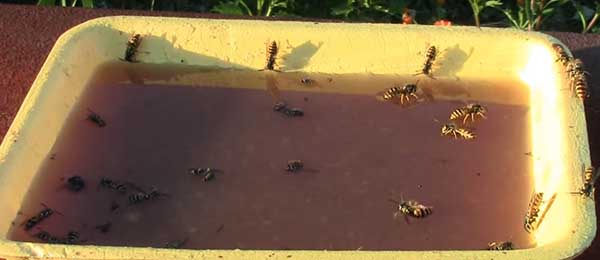
By the way! There is also a special bait for the destruction of wasps - "Otos".
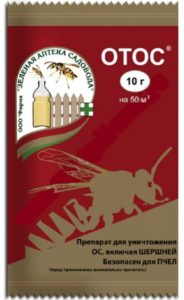
Bottle trap
The trap can be made from a 1.5-2 liter plastic bottle:
- Cut off the neck.
- Turn over and place in the cut off part of the bottle to create a funnel-trap.
Can be stapled around the edges to prevent the wasps from getting out.
- Pour beer (or yeast kvass).
Or prepare any other sweet bait.
- Place it around the grape bushes.
A bee does not fly for beer, but a wasp climbs into a trap.
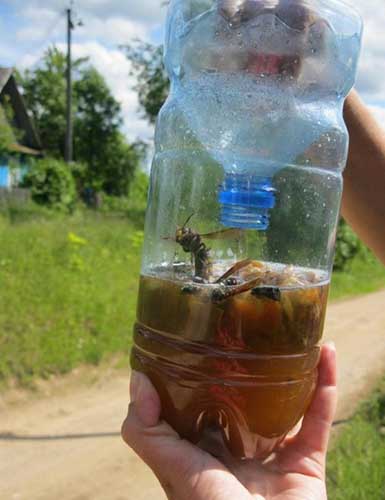
Video: the best trap for wasps and hornets
Glue trap
A small board, plywood or plastic panel (with which the walls are sheathed) should be smeared with any glue from rodents and insect pests, and then hung on the bushes. Wasps will fly up to grapes and stick to these traps in huge numbers, even without any bait.
Better yet, use yellow paper: bees fly towards it even more willingly.
By the way! You can find similar glue traps (yellow) on sale. They are often used in greenhouses from whitefly.
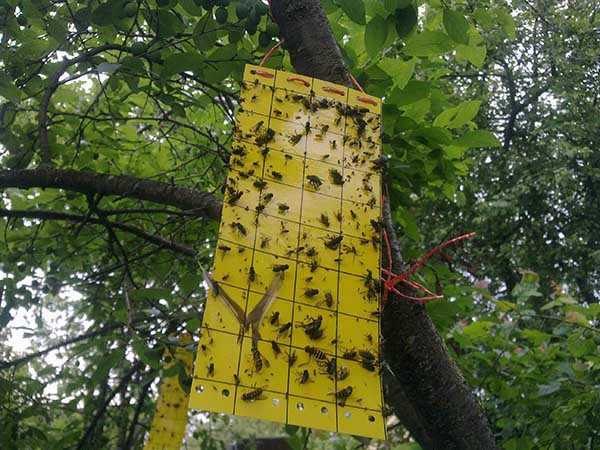
Wasp nest destruction
Alternatively, you can track down where the wasps are coming from and find their nest. And then, when they all flock in the evening to spend the night, sprinkle with a special aspen poison.
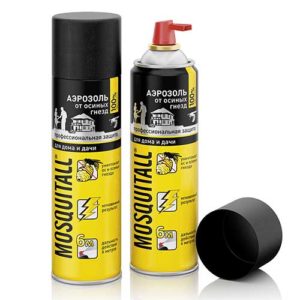
Aerosols such as the rule, sold with a special long thin tube through which you can spray inside the nest.
Sparrow drinkers
Unfortunately, such methods of dealing with wasps do not work against sparrows.However, you can try to come to terms with them: put drinkers aside from the vineyard. Then they will drink and swim in the water without pretending to be your grapes.
Important! Of course, neither the nets on the bushes, nor the bags on the bunches give 100% protection, as well as all kinds of baits and traps, but in any case, you will save most of the harvest in this way.
So that you do not get disappointed with the work done to care for the vineyard, be sure to start protecting the grapes from birds and wasps in time. The task is difficult, but solvable, so good luck in this difficult task - saving the crop from flying pests.
Video: reliable protection of grapes from wasps and birds - the main ways to combat


Video: protecting grapes from wasps and birds